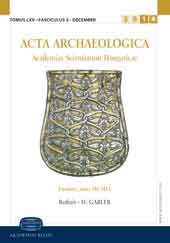A note on the research on the ewer with enamel plaques of St. Maurice d'Agaune
A note on the research on the ewer with enamel plaques of St. Maurice d'Agaune
Author(s): Csanád BálintSubject(s): Archaeology, Cultural history, 6th to 12th Centuries, Cultural Essay
Published by: Akadémiai Kiadó
Keywords: St. Maurice d'Agaune; Enamel plaques; Middle age; Avars; Sassanian Iran;
Summary/Abstract: There are very few objects equally well-known in the early medieval archaeology and art history of Western Europe, Byzantium, Sassanian Iran, early Islam and the Avars, and one of them is the ewer from the monastery of St. Maurice d’Agaune. It has not been doubted for long now that the ewer itself is a ninth-century Carolingian goldwork. What are debated and uncertain, however, are the dating (6th to 12th century) and origin of the decorative enamel plaques. Views differ significantly especially regarding the latter (Iran, Byzantium, the Abbasid Caliphate, Avars, the Carolingian Empire, medieval Venice), in 1946 M. Aga-Oglu counted 13 (!) versions, not including the theory of Avar origin, which was put forward only after the publication of the Turkish scholar’s article. Although I will not be able to provide here an answer either, I hope to contribute to research by eliminating two candidates from the list of the most probable places of origin.
Journal: Acta Archaeologica Academiae Scientiarum Hungaricae
- Issue Year: 57/2006
- Issue No: 1-3
- Page Range: 281-289
- Page Count: 9
- Language: English
- Content File-PDF

